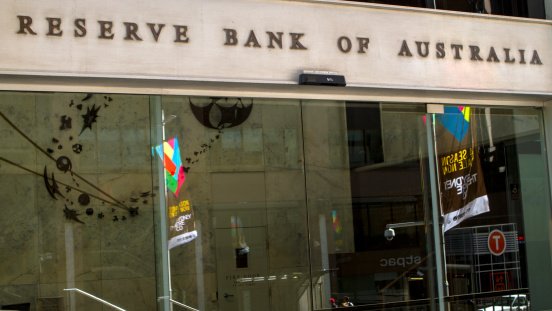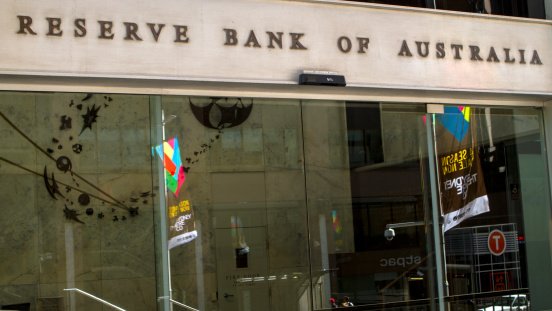
On Tuesday the Reserve Bank Governor Lowe made a major speech where he outlined the Bank’s key economic forecasts.
These forecasts are based on the Bank’s central outlook for the policy response to the Covid Crisis whereby domestic shutdowns are gradually eased through the June and September quarters and “mostly removed by late in the year”.
Westpac released forecasts on March 31 where the central outlook for the Crisis was similar to the Bank’s central view.
We are encouraged that our forecasts are broadly in line with the forecasts the Governor released in his speech. Westpac forecast that the economy would contract by around 9.5% in the first half of 2020 (RBA minus 10%); the economy would contract by 5% over 2020 (RBA minus 6%); the unemployment rate would lift to 9% by end June (RBA 10%); implying that growth would bounce back by 4–5% in the second half of 2020, (RBA similar).
We do however differ with the RBA’s forecast for growth in 2021 with the RBA forecasting 6–7% and Westpac at 4%.
It appears that, next year, we are heading for a repeat of the last few years when RBA growth forecasts were consistently significantly above our own forecasts. That bullish view is despite the observation that “the twin health and economic emergencies that we are experiencing now will cast a shadow over our economy for some time to come”.
The other key observation was around the outlook for interest rates. The Governor indicated that he expected the three year bond target to remain in place for a “number of years”.
He also reiterated that the cash rate target would not be lifted before the three year bond yield target was lifted.
The choice of the three year bond target rate as the same as the cash rate target is strategic since it sends a clear message that if the Bank is prepared to purchase three year bonds at the overnight cash rate it is reasonable to expect that it is comfortable with the cash rate holding at 0.25% for the full three years.
This does not mean that it cannot lift the rate for the bond yield target. A higher target rate would imply that the Bank now expects the cash rate to be lifted within the three year window therefore signalling an appropriately tighter monetary policy.
A lift in the target rate would see the market’s timing for the cash rate increase brought forward and the arbitrage between swap markets and the bond rate would pin point that expected timing.
For example, if the target rate was lifted from 0.25% to 0.35% pricing for the timing of the cash rate outlook would force the swap rate to lift and forward/forward markets would also move to attempt to pin point the timing of the next increase.
Lifting the level of the bond yield target would not signal an imminent rate increase. If markets immediately moved to that conclusion then an arbitrage between swap rates and the bond yield that was being determined by the RBA would open up and, eventually, swap rates would have to move into with the bond rate as long as the RBA was prepared to defend it.
If markets detected multiple rate hikes over the three year period the Bank could choose to dissuade those market expectations by standing firm at the chosen bond rate. Arbitrageurs would soon settle market expectations as going long the swap and shorting the bond rate to the RBA would soon settle market pricing into line with the bond rate.
Alternatively the RBA could indicate that policy moves might not be restricted to 25 basis points under the reasonable assessment that the amplitude of rate cycles could be expected to be much smaller than in previous periods where inflation was much higher and more volatile.
Markets might therefore assess a move in the bond yield target as consistent with an earlier but smaller lift, or series of smaller increases, in the cash target.
Use of the bond yield target in that way would give the RBA more flexibility in signalling policy intentions while maintaining its hold on the three year yield. Central banks should remain relevant and given the RBA has chosen a price target for its unconventional policy it could use the yield target, complemented by the expectation of smaller incremental policy moves to keep its price setting activities important for signalling.
For example, if the RBA decided to abandon the bond target altogether, maintaining the target allows the RBA to manage any markets are likely to boost rates right across the curve, in particular risking an overshoot in the three year rate .Maintaining the yield target allows the RBA to contain any damaging overshoot.
The three year rate is set to become even more important for private rates than we have seen in the past.
That is because, in the near term, mortgage borrowers are likely to surge into the fixed rate mortgage product in recognition that the overnight cash rate has reached the lower bound.
We expect that the overnight cash rate is unlikely to be lifted before December 2023.
However, as discussed above, that does not necessarily mean that the Bank will not adjust the bond yield target over this period.
Beyond that date economic forecasts are so inexact that projections become appropriate. By their nature , projections imply some move back to equilibrium for both economic variables and financial forecasts. The best way to consider that is assuming a gradual move back towards “real neutral”.
Our view out to 2023 is based on our forecasts for the unemployment rate; inflation; and wages growth. It is also based on the assessment that central bank policy has moved towards being much less pre-emptive than in earlier periods..
Consider the actions of the RBA following the Global Financial Crisis. The last rate cut in the easing cycle was April 2009. By October 2009 the unemployment rate which had reached 4% in 2007 was holding at 5.8%, well above the full employment rate; the inflation rate had fallen below 2%. Nevertheless the RBA actually raised the cash rate in anticipation of the income/ inflation boost expected to eventuate with the mining boom. The explanation at the time was, despite other central banks – FOMC; ECB; still in expansionary policy mode ;the need was to move away from “emergency” rate settings.
Rates were lifted by 175 basis points in the space of less than 18 months. Unfortunately the pre-emptive approach suffered from overestimating the inflation implications of the mining boom and other unexpected global developments.
Rates have been continuously lowered (total of 450 basis points) from November 2011 to the present.
The lesson for the RBA was that unlike earlier periods inflation pressures are very slow to build. That provides it with flexibility to tone down pre-emptiveness.
Policy will be driven by the realisation that the policy objectives are being realised rather than acting in anticipation of achieving the objectives.
The most important forecast will be the unemployment rate. Unemployment is a key policy goal in its own right and the most important influence on inflation through the impact that spare capacity in the labour market has on wages and therefore inflation.
Westpac expects that growth in the Australian economy will slow back to potential from the second half of 2021. Labour markets are slow to heal following economic crises. After twelve years the Australian labour market had not returned to the pre GFC unemployment rate of 4%. The deterioration in the underemployment rate was more severe. Both factors are likely to be apparent in the post-Covid period.
We expect that the unemployment rate will hold around 6% in 2021–2023 – well above the 4.5% full employment rate. Accordingly wages growth, which we expect will slow to an annual pace of 1.5% by mid-2021 will fail to return even to the disappointing 2.5% we experienced before the advent of the Covid Crisis.
Employment intensive sectors such as inbound tourism; foreign students; dwelling construction and retail are and will be damaged by the Crisis. Permanent immigration is already contracting sharply and, unfortunately, governments have a long history of constraining permanent immigration at times of high unemployment.
The Government’s approach to fiscal policy will be important. Following the Crisis, for no policy change,we can expect Budget deficits to ease implying a tightening of fiscal policy.
My recommendation would be to embrace growth oriented fiscal policies which will delay the “healing” of the deficit; even threatening the AAA credit rating.
Personal tax cuts, which are currently scheduled for 2022 should be brought forward. Eschewing growth oriented fiscal policy to address the current deficits will only exacerbate the unemployment problem.
The cash target of 0.25% will hold at least until end 2023. The unemployment rate is unlikely to fall much below 6% and even if some short term downward momentum builds in the unemployment rate the RBA will be cautious seeing no need to be pre-emptive. Nevertheless the Reserve Bank can play an important role through its management of the three year bond yield target.
High spare capacity in the labour market will weigh on wages growth; household incomes; and inflation. These issues have been characteristics of the economy before the Covid Crisis and are very likely to re-emerge in the post Covid era.
A more expansionary approach to fiscal policy will be necessary but not sufficient.
However, the aftermath of a global recession; damaged business balance sheets; and a sustained fall in permanent immigration are all formidable headwinds for the economy. These will l super impose on the difficulties which were faced by the economy before the current crisis.


 Signal2forex.com - Best Forex robots and signals
Signal2forex.com - Best Forex robots and signals




